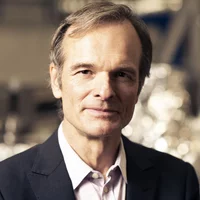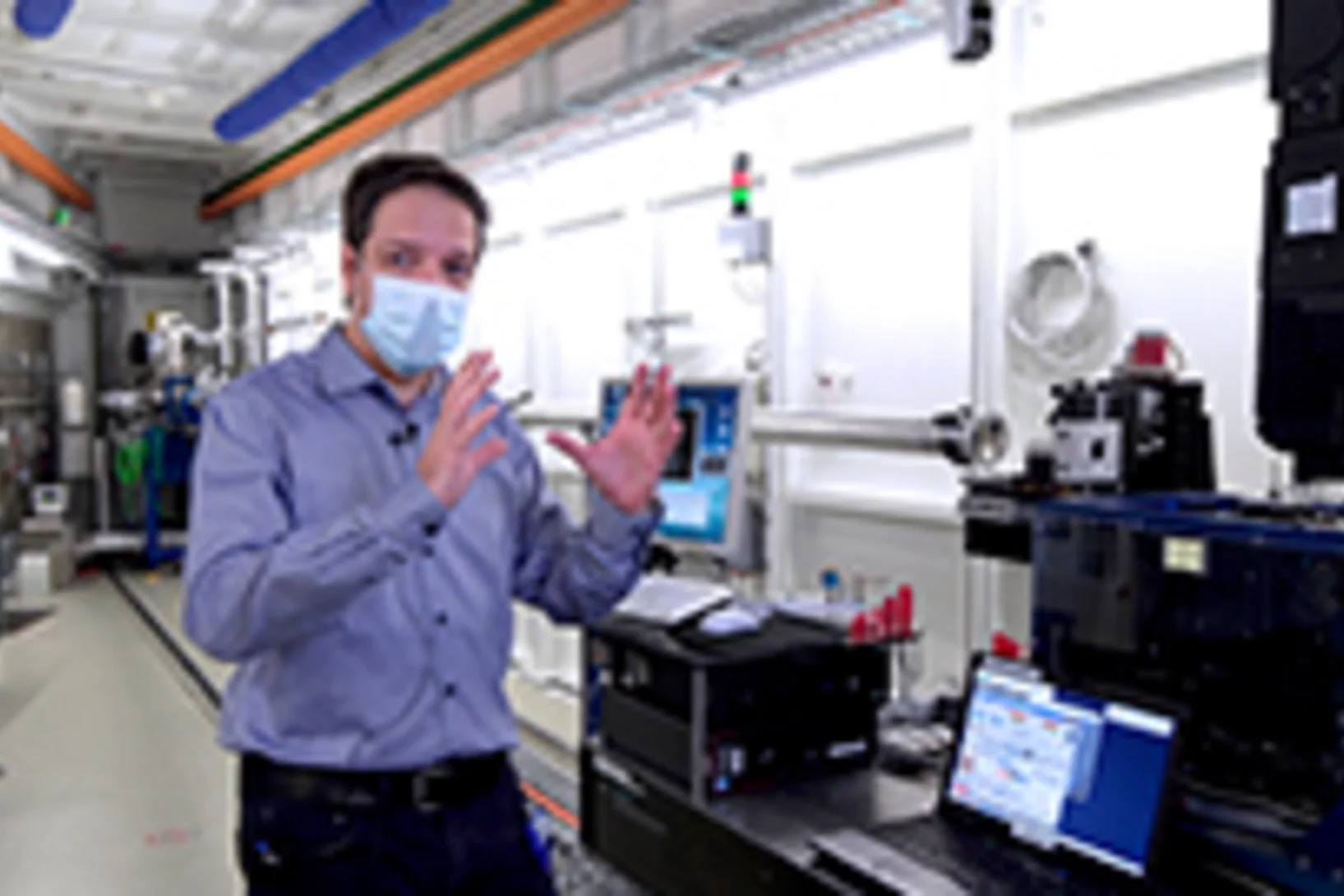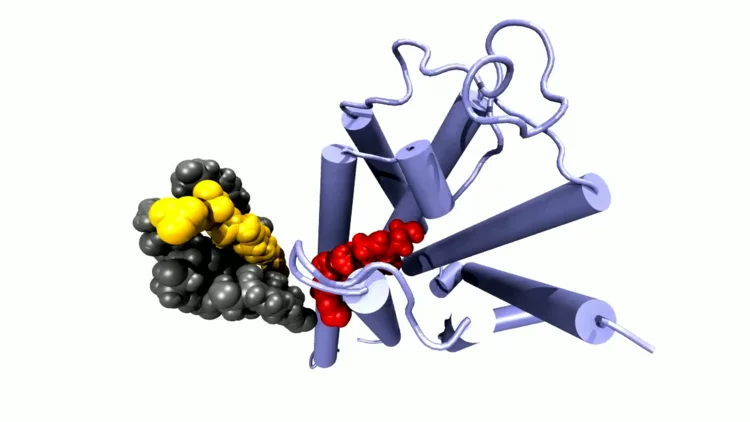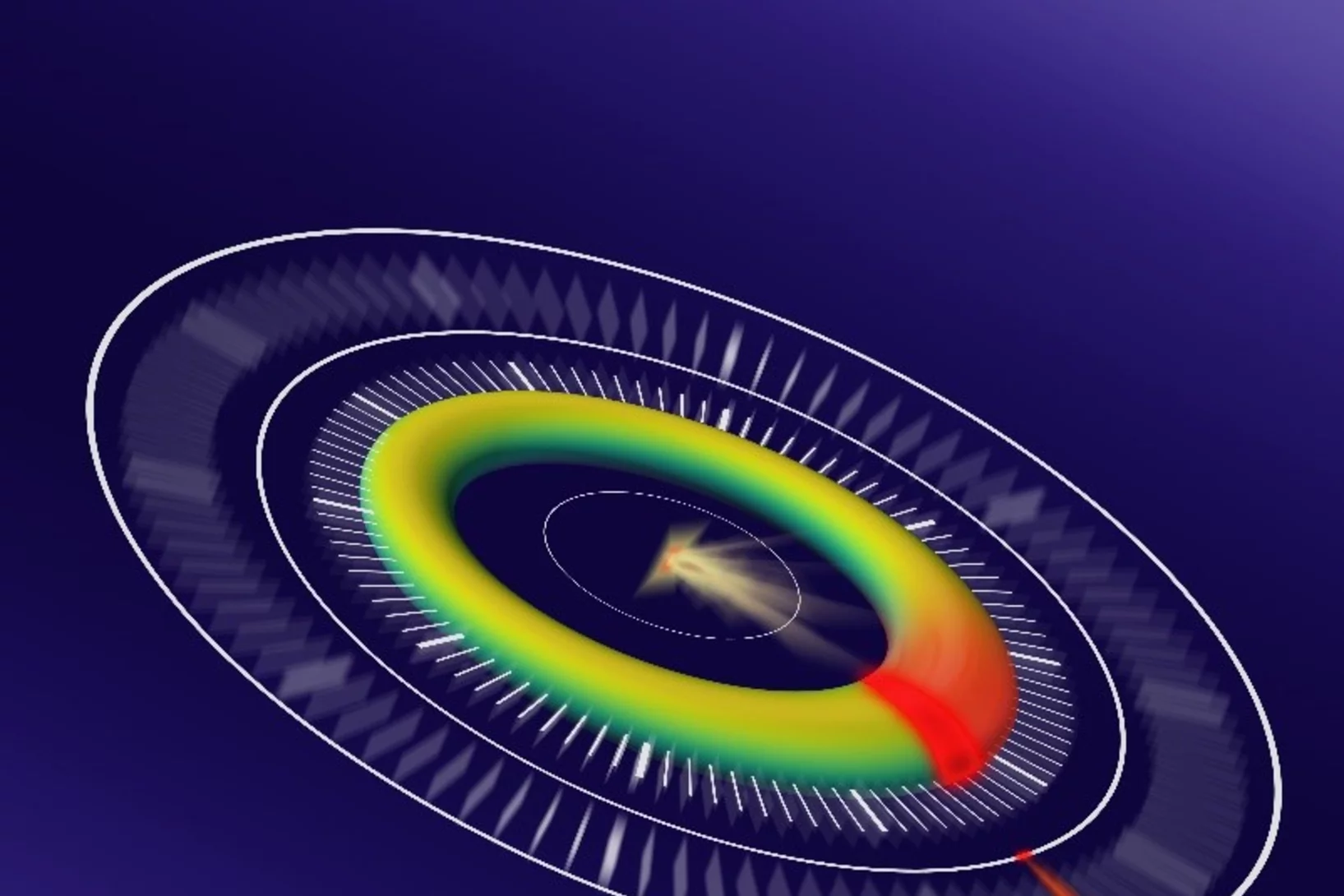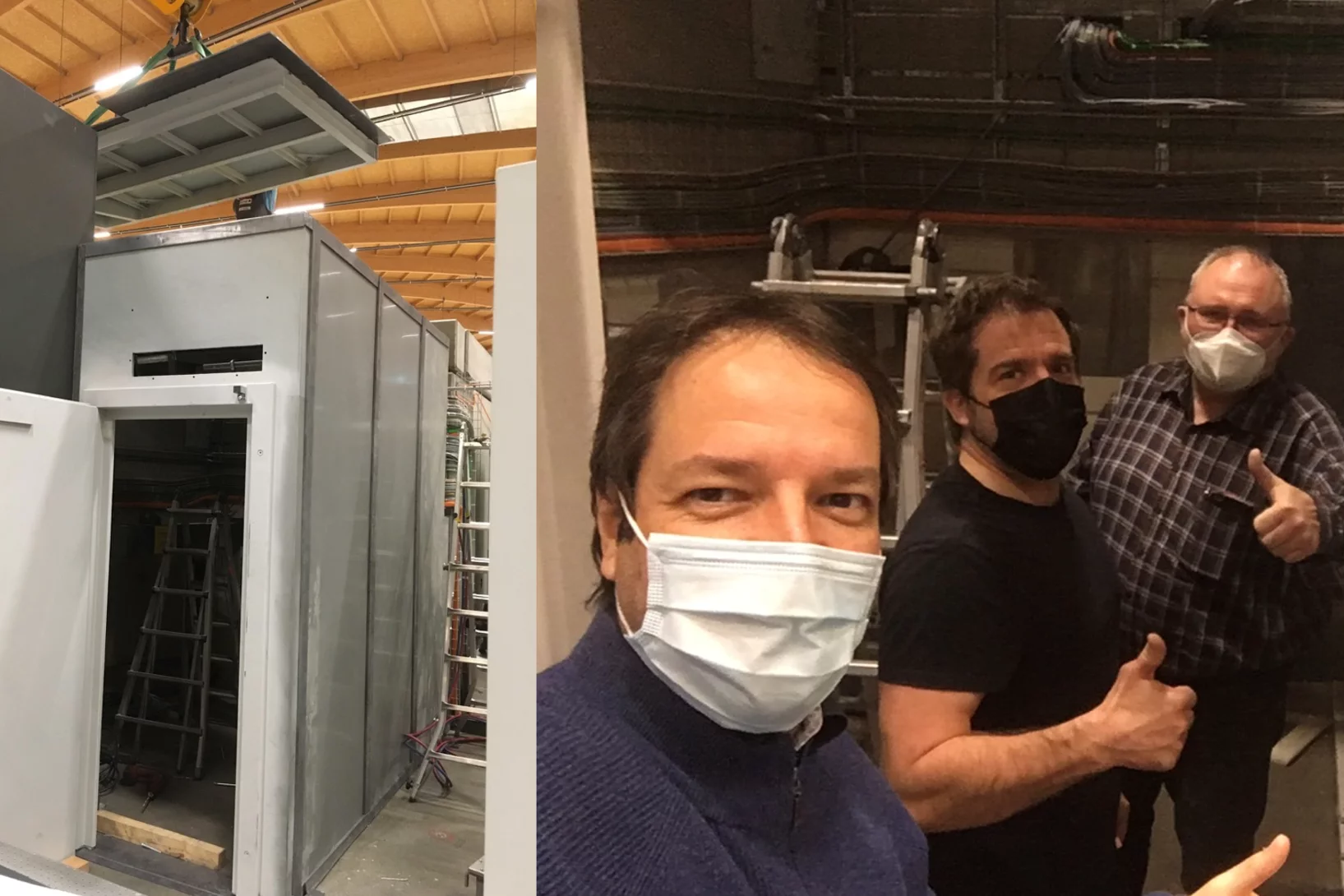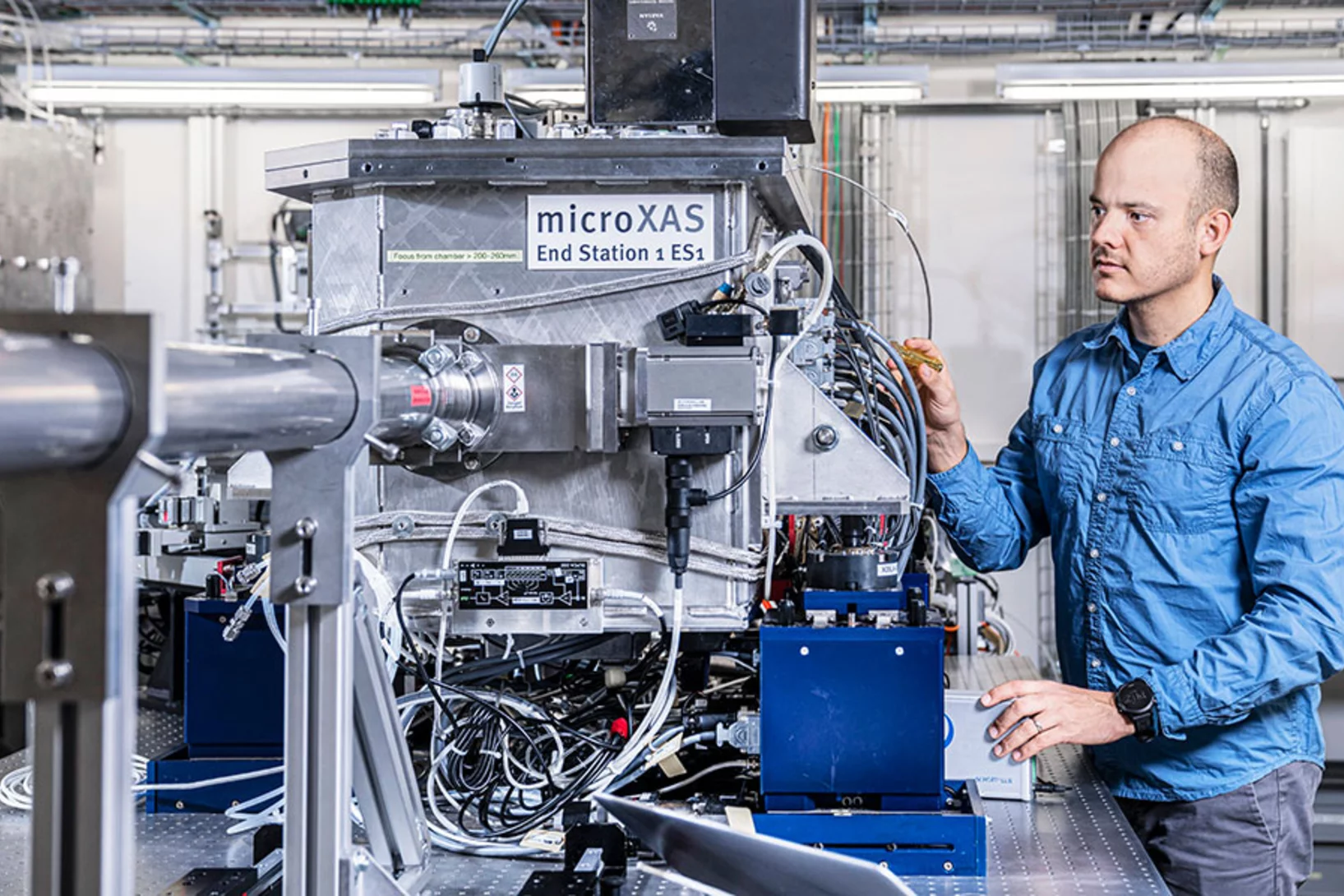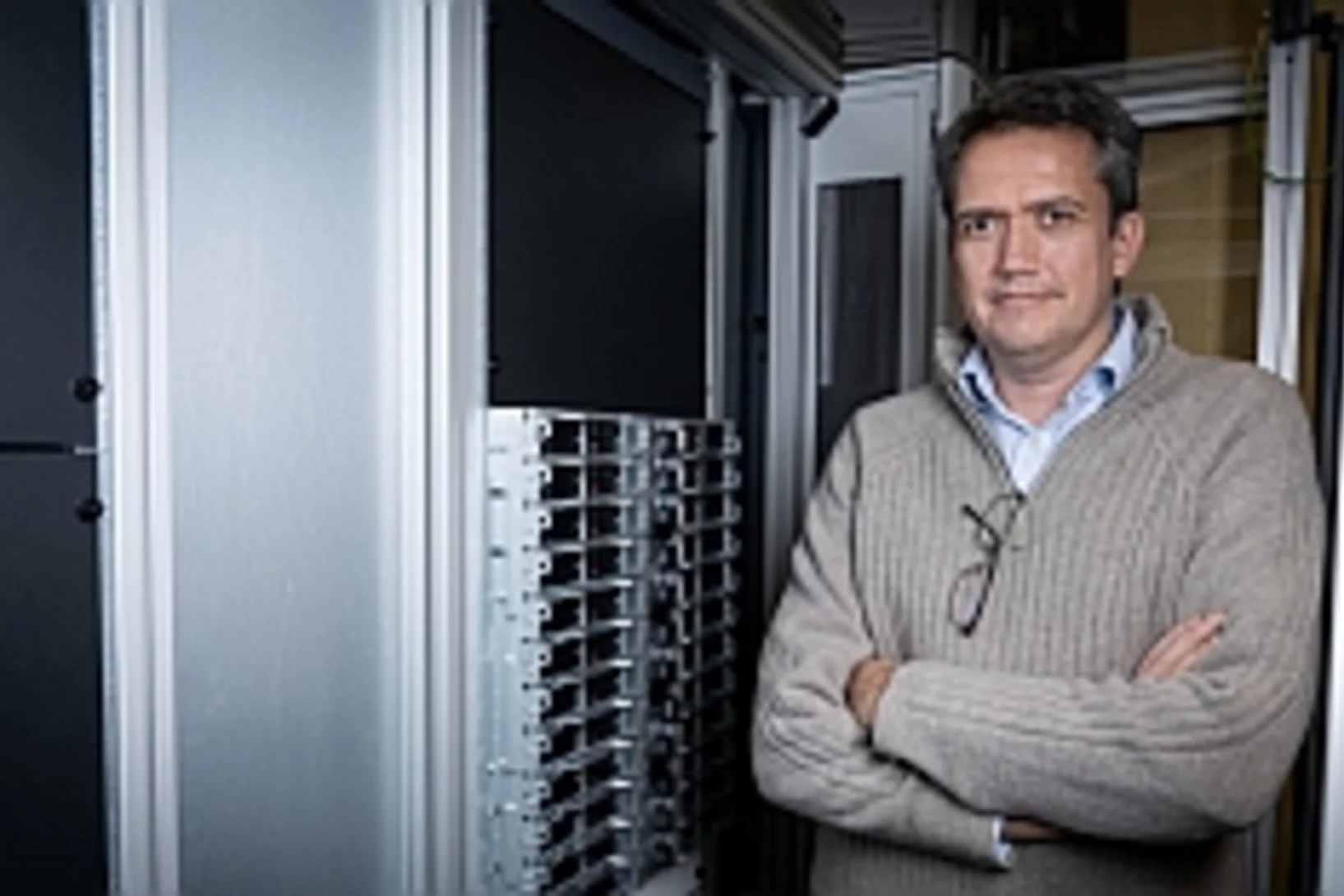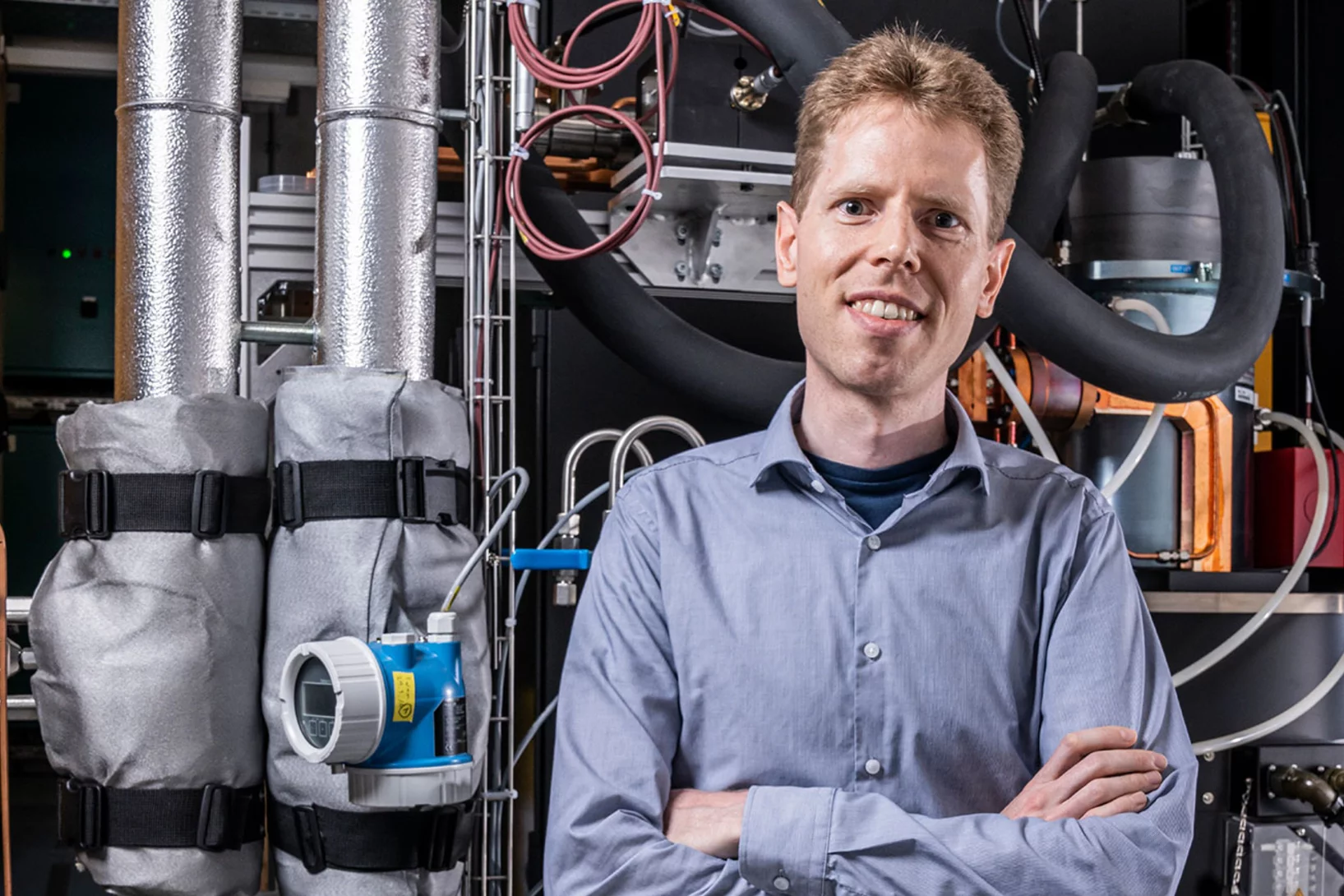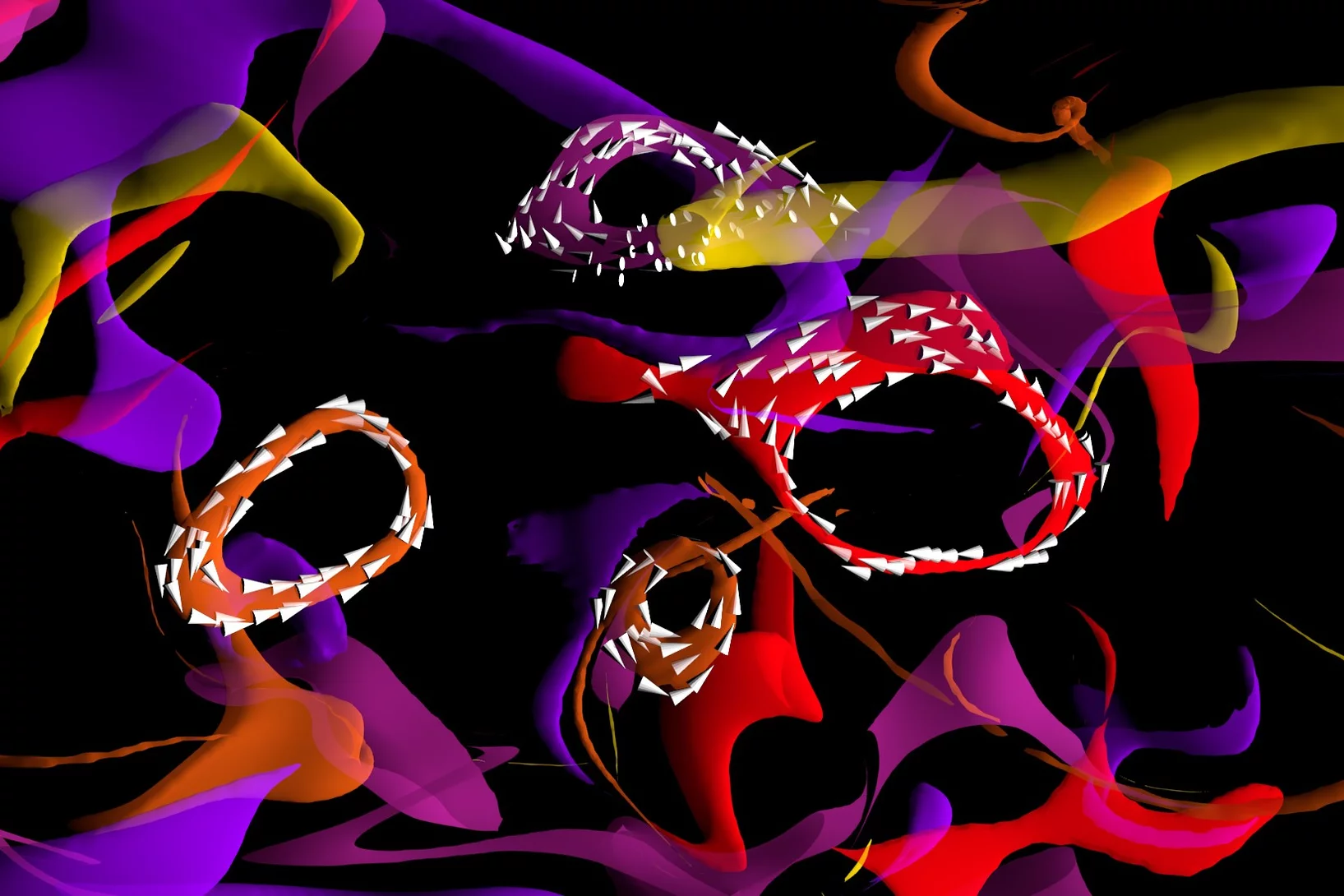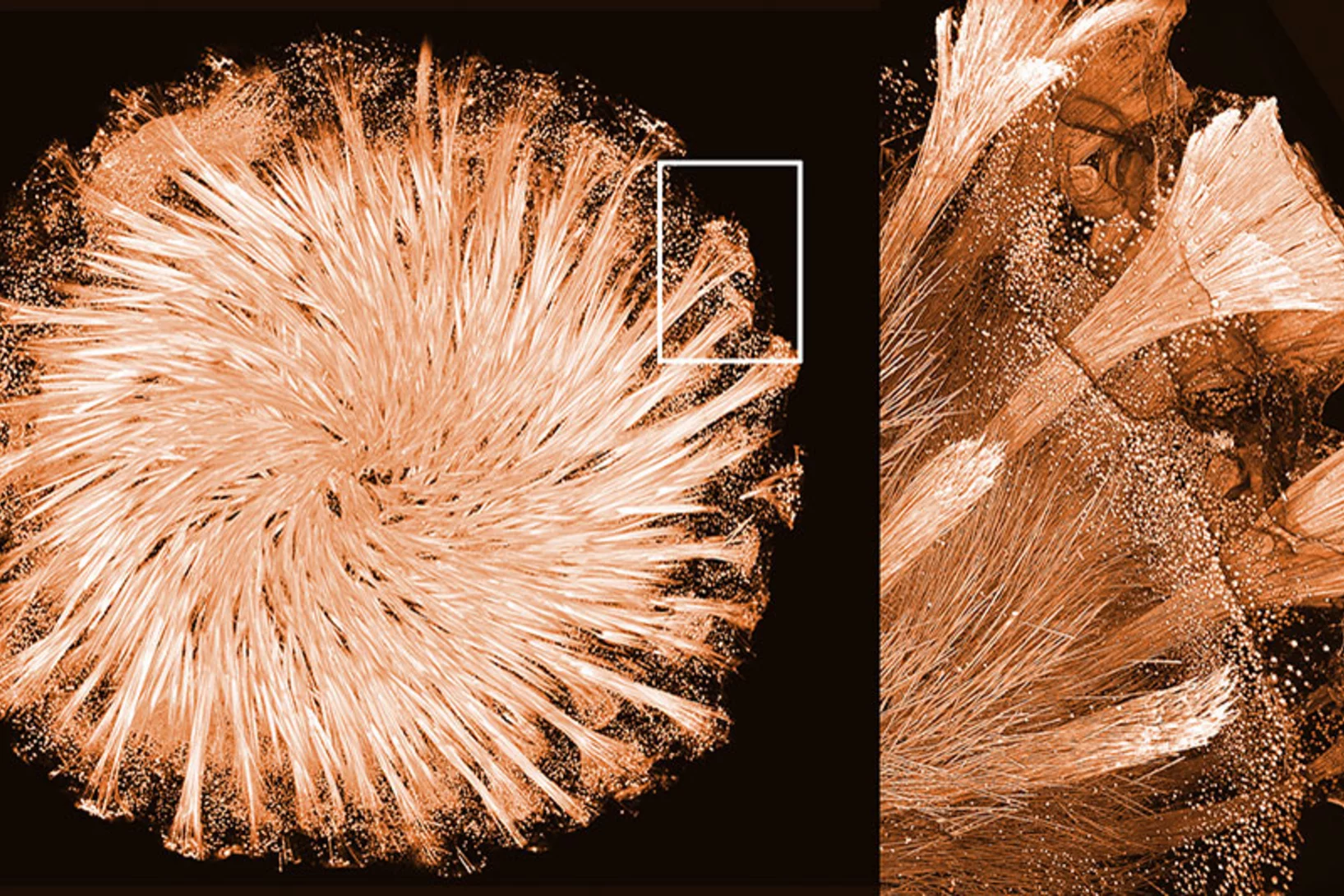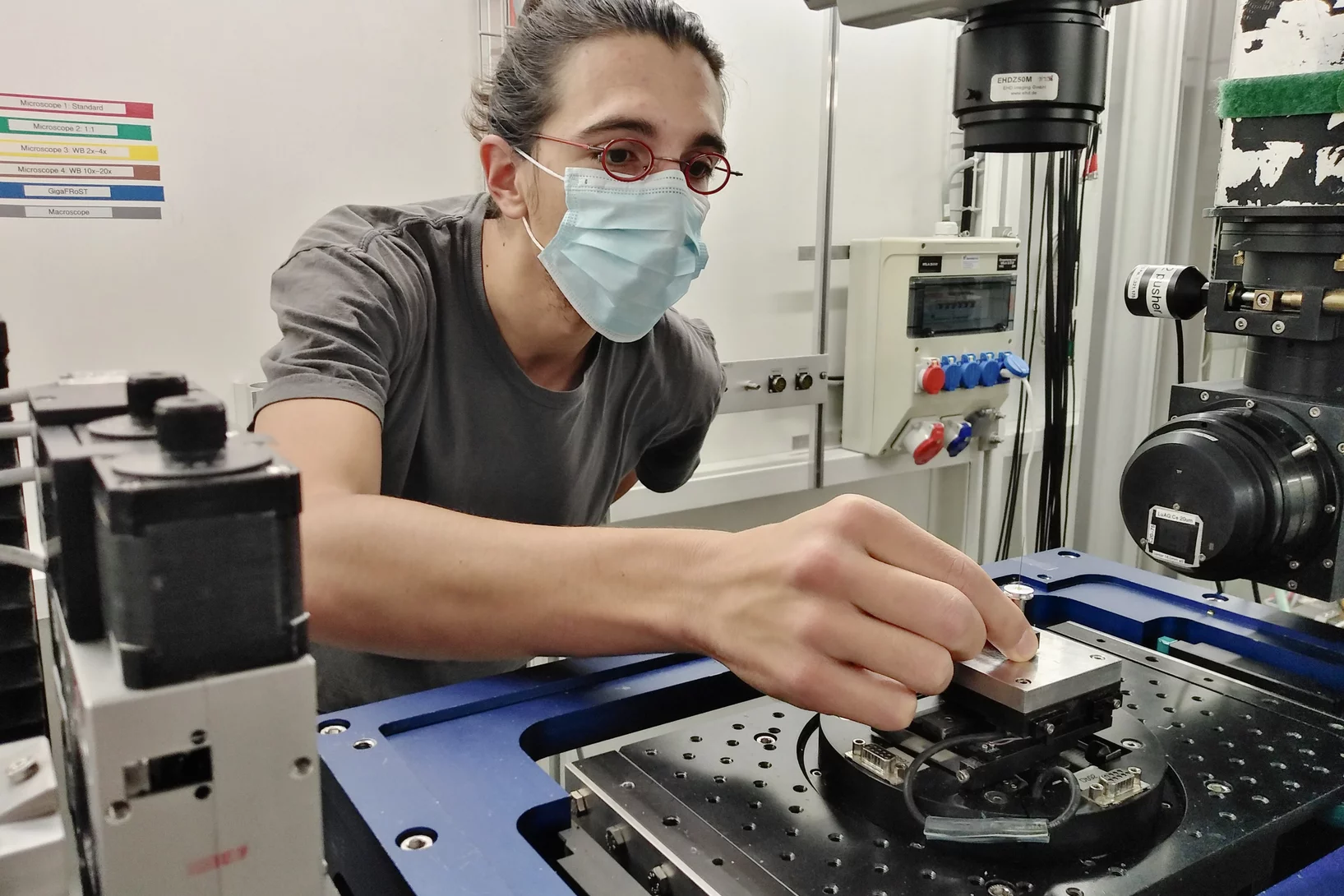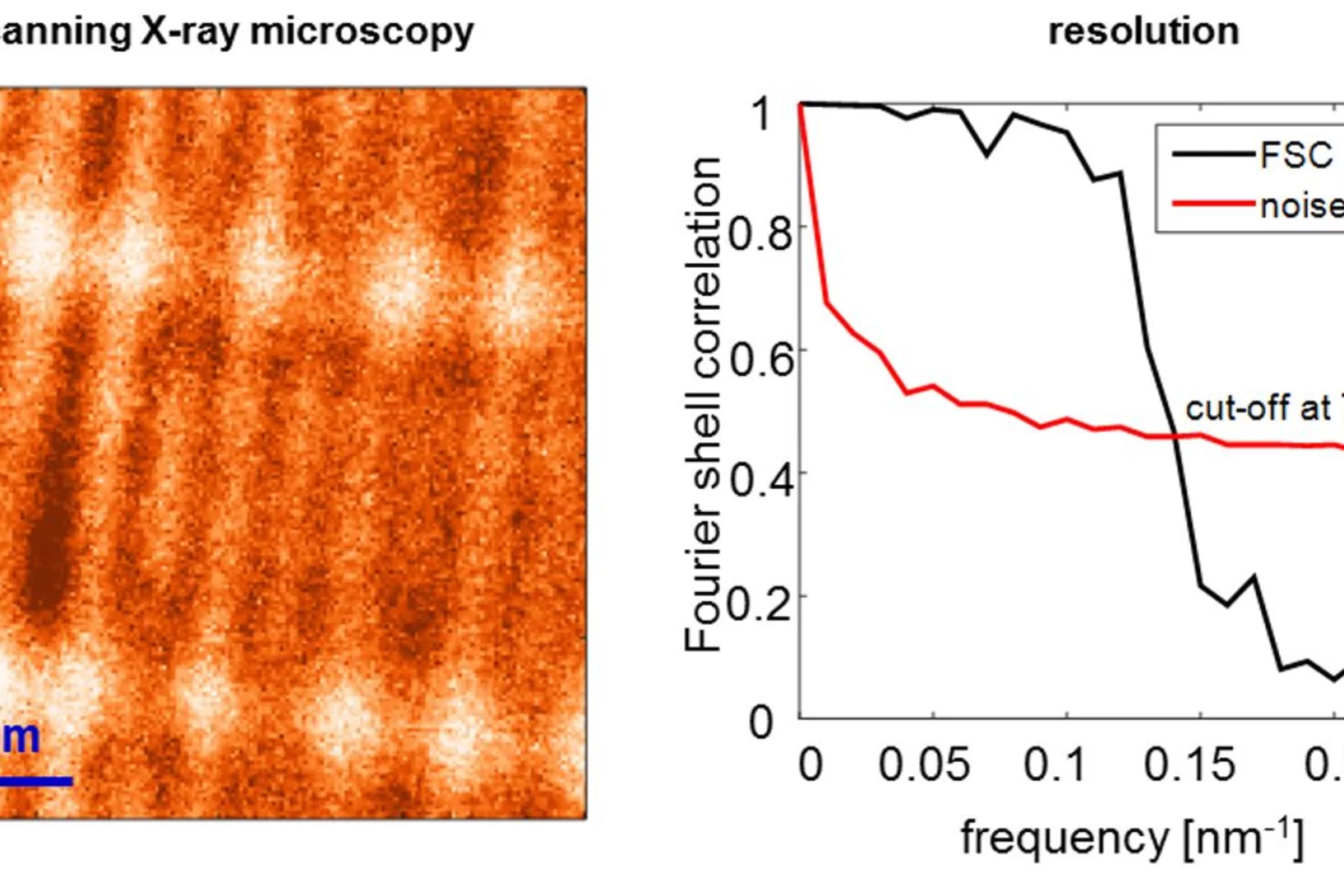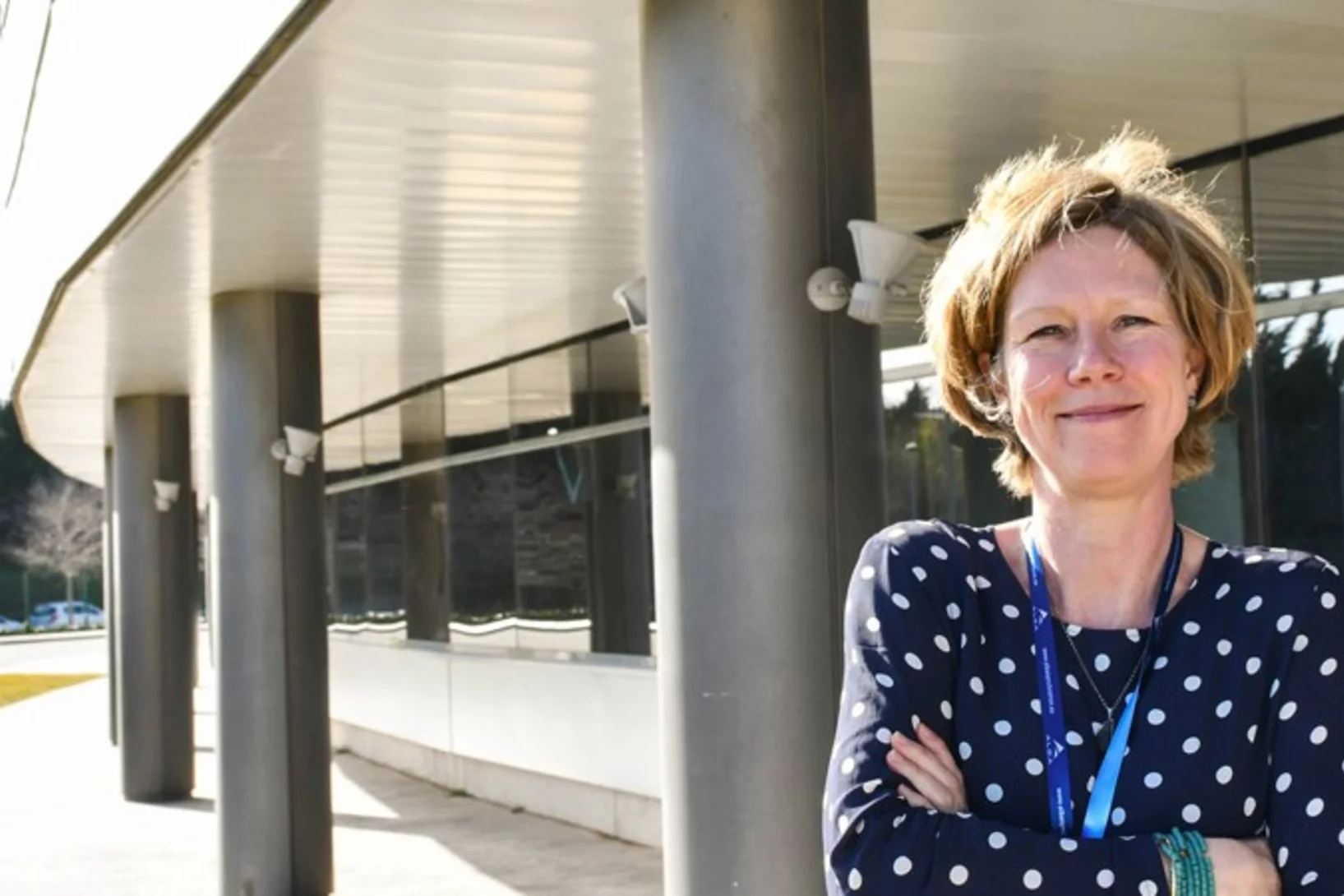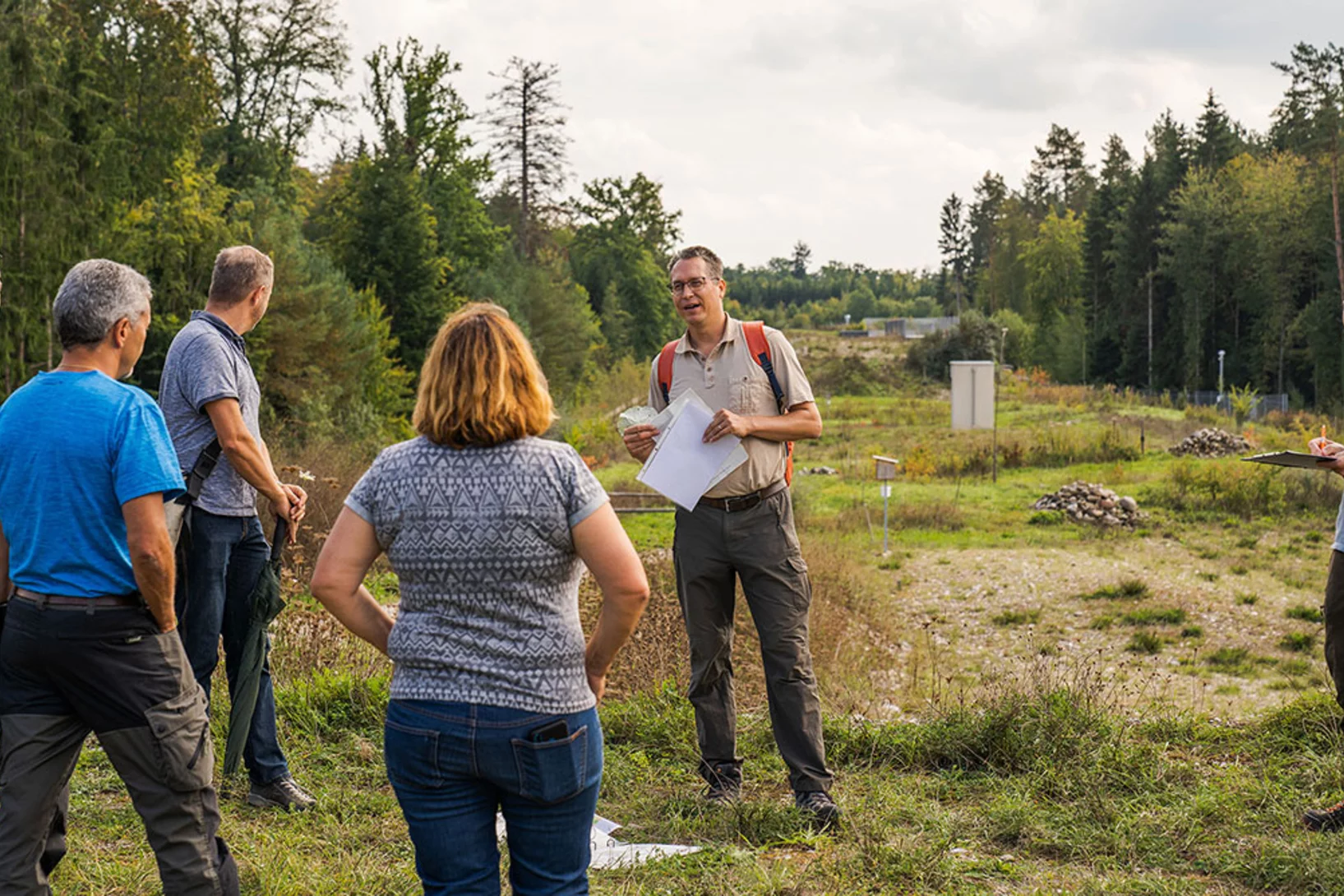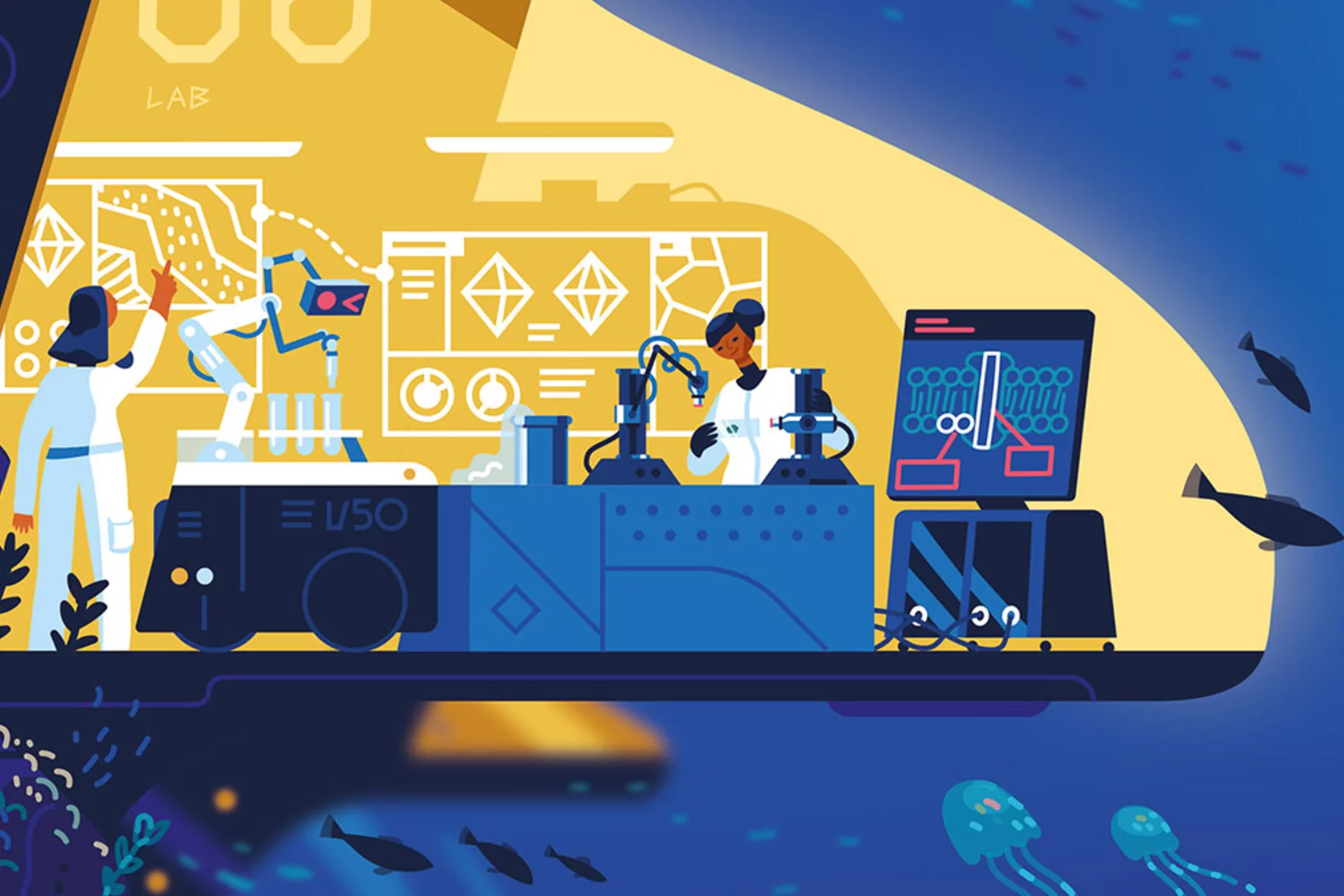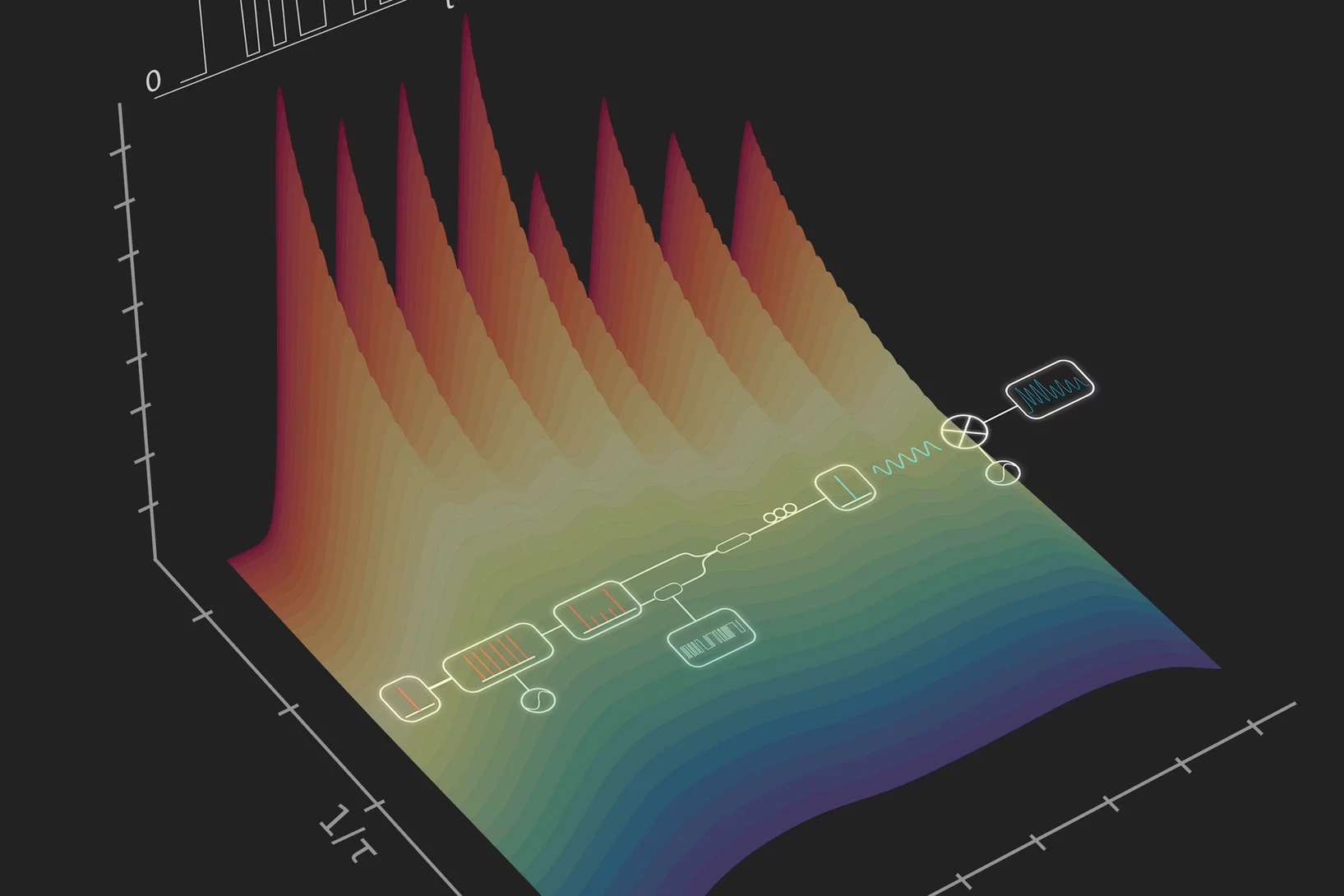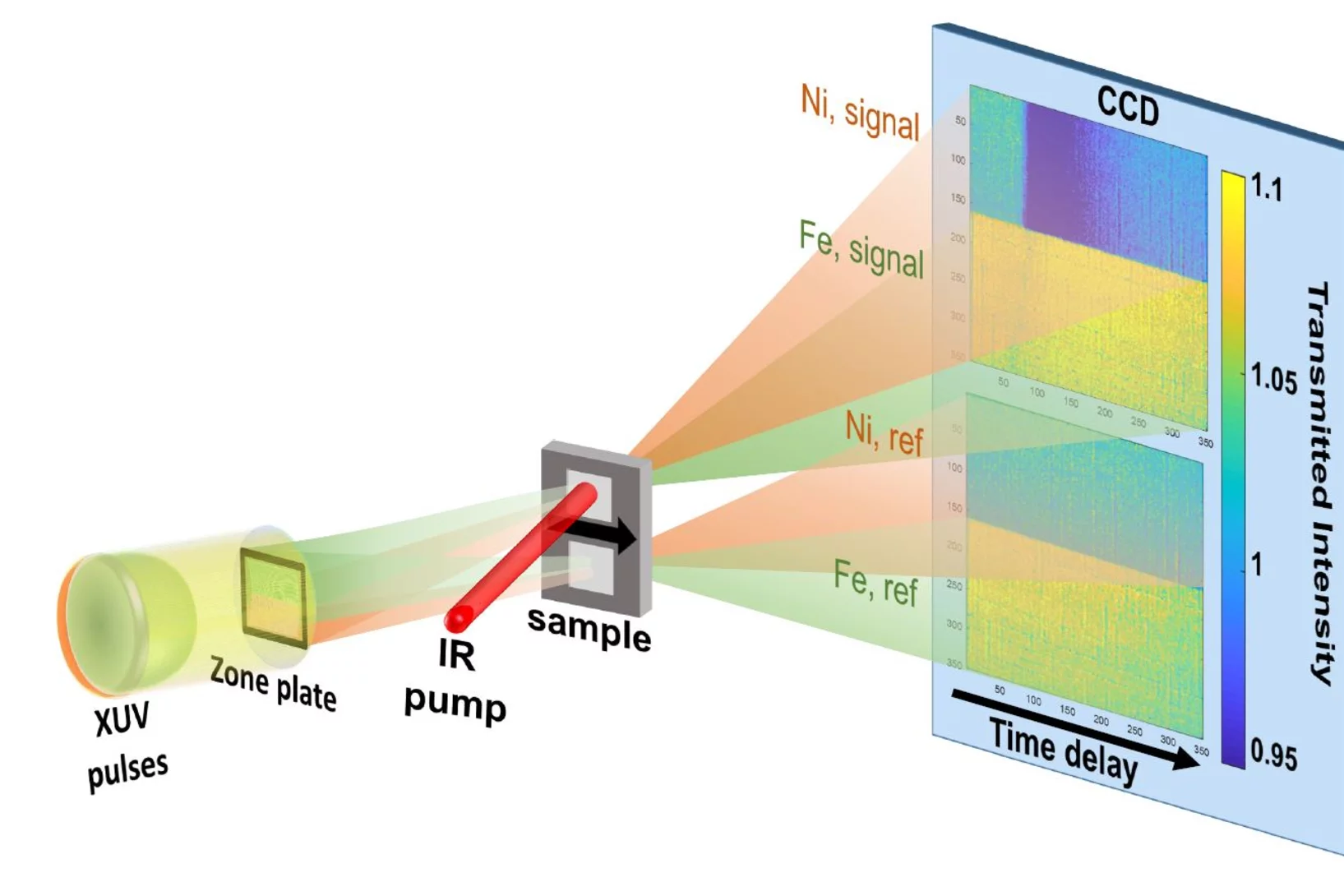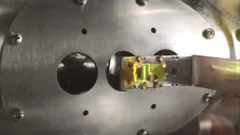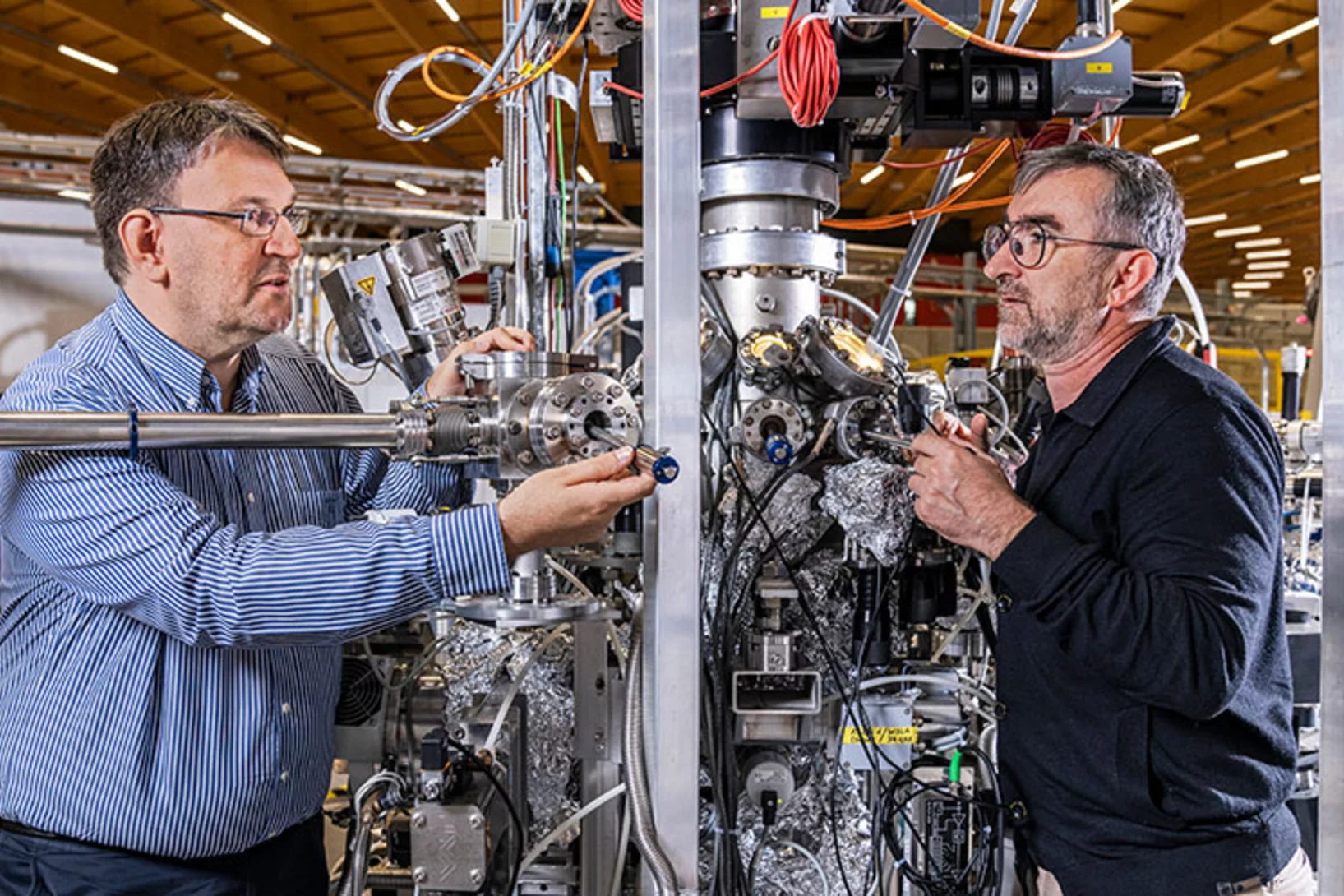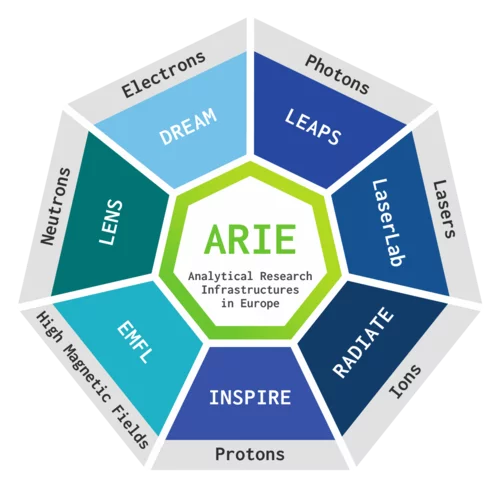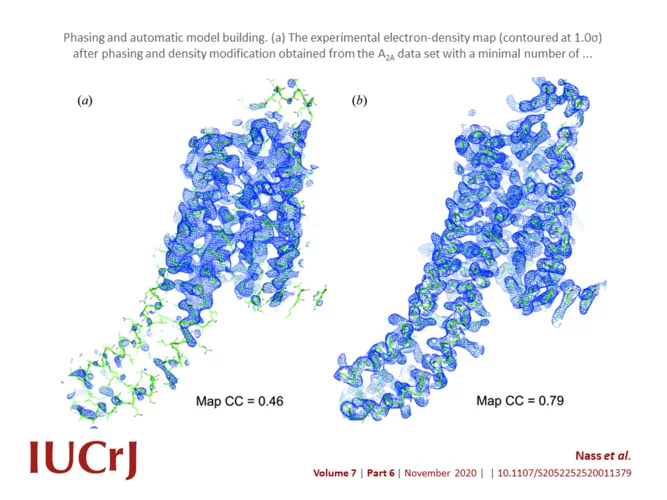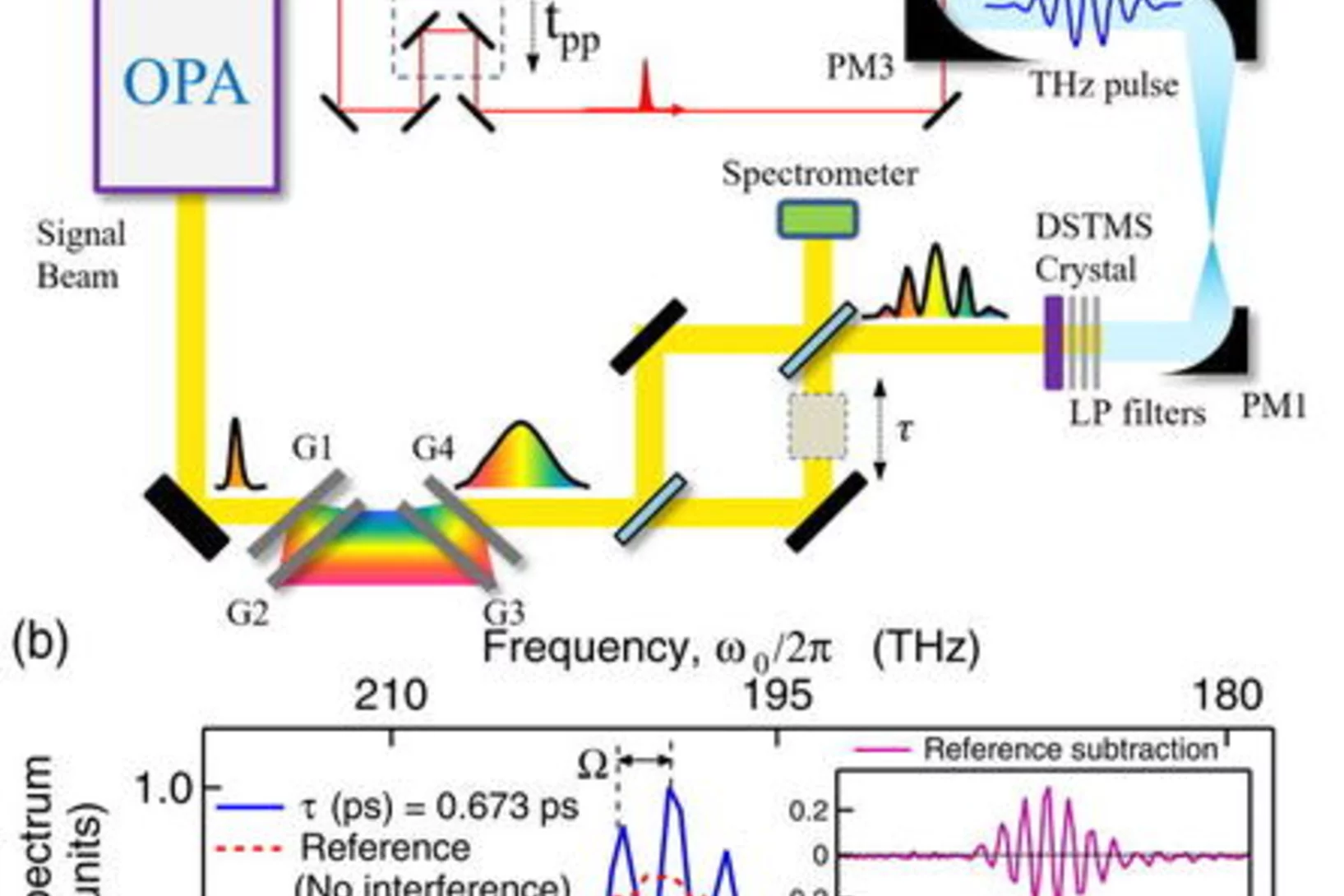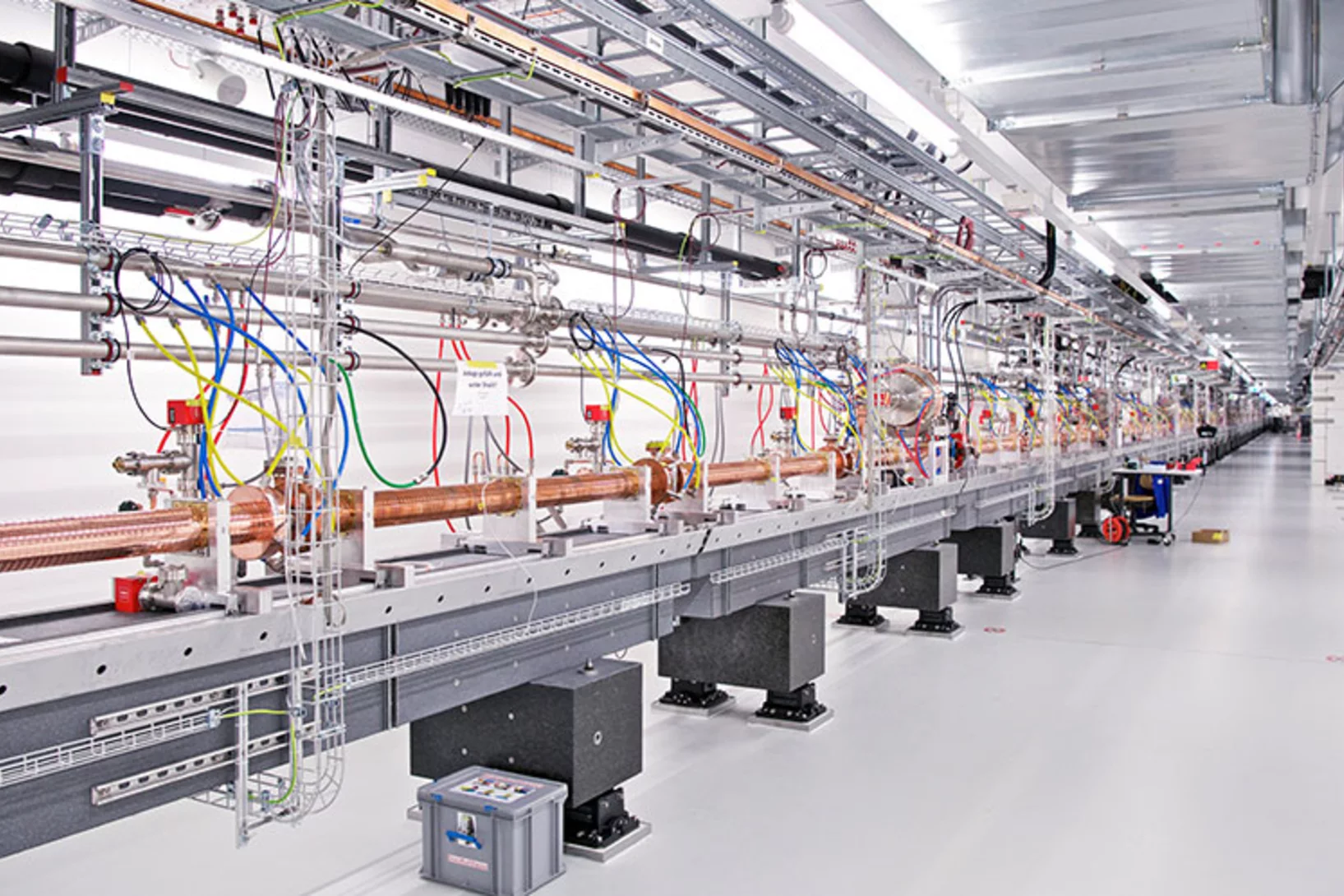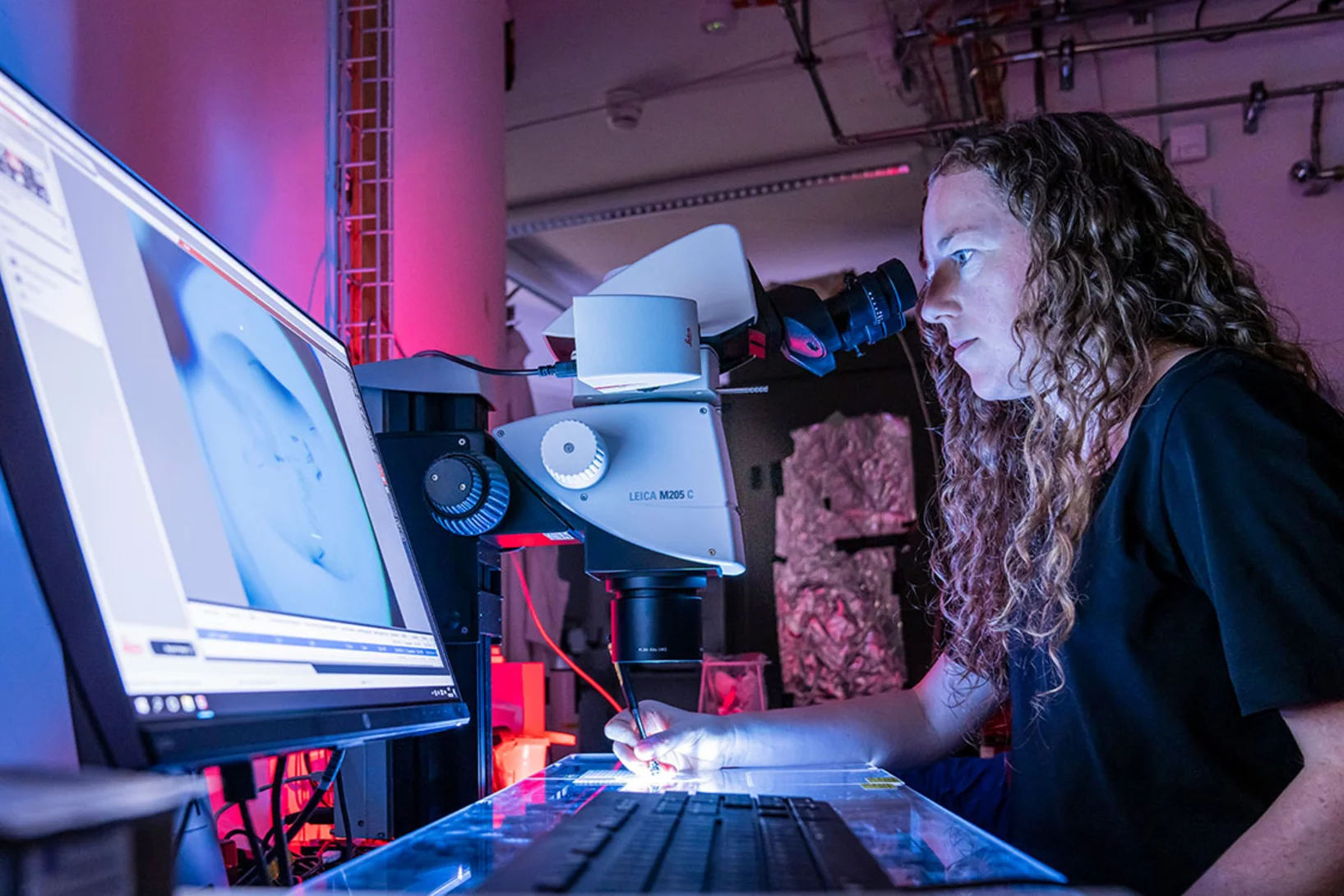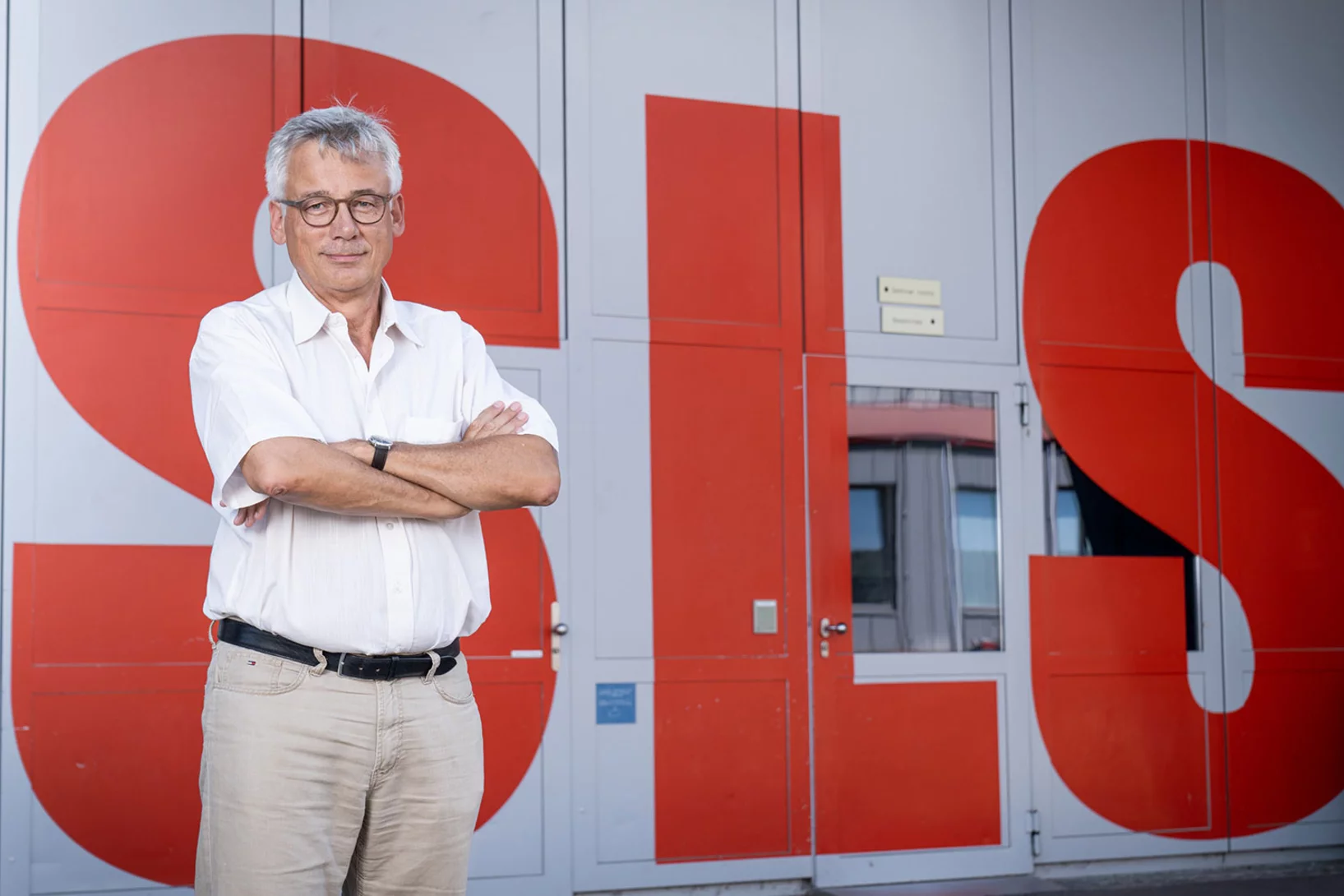Forschung zu Covid-19 am Paul Scherrer Institut
Während viele Bereiche des Lebens eingeschränkt sind, bleiben wichtige Forschungsanlagen am PSI in Betrieb.
Regarder les protéines des récepteurs se courber
Les récepteurs couplés aux protéines G servent de médiateurs dans l'organisme. Dans une interview Ramon Guixà explique comment il donne vie aux molécules réceptrices à l'écran.
Nouveau plan de construction pour des ordinateurs quantiques plus stables
Des chercheurs du PSI ont montré comment des bits quantiques plus rapides et plus précis peuvent être créés. Leurs idée centrale est d'introduire de manière ciblée des atomes magnétiques de la classe des terres rares dans le réseau cristallin d’un matériau.
Clocking the movement of electrons inside an atom
Scientists pioneer an approach called self-referenced streaking, clocking Auger electrons with sub-femtosecond resolution. The breakthrough will unlock the broader potential for attosecond time resolution at X-ray free-electron lasers
SLS 2.0 approved - TOMCAT 2.0 cleared for takeoff!
In December 2020 the Swiss parliament approved the Swiss Dispatch on Promotion of Education, Research and Innovation (ERI) for 2021 to 2024 which includes funding for the planned SLS 2.0 upgrade. The new machine will lead to significantly increased brightness, thus providing a firm basis for keeping the SLS and its beamlines state-of-the-art for the decades to come. The TOMCAT crew is very excited that the TOMCAT 2.0 plans (deployment of the S- and I-TOMCAT branches, see SLS 2.0 CDR, p. 353ff) have been included in the Phase-I beamline upgrade portfolio. These beamlines will receive first light right after the commissioning of the SLS 2.0 machine around mid 2025. A first milestone towards this goal has just been achieved, with the successful installation of the S-TOMCAT optics hutch during W1 of 2021. The TOMCAT scientific and technical staff would like to thank Mr. Nolte and his Innospec crew for delivering perfectly on schedule.
Le PSI équipe la Source de Lumière Suisse SLS pour l’avenir
Feu vert pour la SLS 2.0: l’upgrade de la Source de Lumière Suisse SLS peut avoir lieu. Le financement est assuré dans le cadre du message FRI 2021-2024 approuvé à la mi-décembre.
Vue en trois dimensions de l’intérieur de catalyseurs actifs
La spectroscopie de rayons X in operando permet de jeter un coup d’œil à l’intérieur de réacteurs chimiques en fonction. Des chercheurs de l’Institut de technologie de Karlsruhe (KIT), à l’Institut Paul Scherrer PSI et à l’European Synchrotron Radiation Facility (ESRF) en France, appliquent avec succès cette méthode.
Le bibliothécaire des pétaoctets
L’upgrade prévu de la Source de Lumière Suisse SLS doit être préparé dès maintenant. Pour relever les défis de la recherche de l’avenir, Alun Ashton estime la quantité de données que les futures expériences produiront.
Etape majeure pour la nouvelle ligne de faisceau du SwissFEL
La deuxième ligne de faisceau est en train d’être mise en service au SwissFEL, le laser à rayons X à électrons libres de l’Institut Paul Scherrer PSI. Baptisée Athos, elle devrait permettre aux chercheurs de comprendre le fonctionnement des catalyseurs et le rôle de certaines biomolécules dans le déclenchement de maladies génétiques.
Magnetic vortices come full circle
The first experimental observation of three-dimensional magnetic ‘vortex rings’ provides fundamental insight into intricate nanoscale structures inside bulk magnets, and offers fresh perspectives for magnetic devices.
La structure des protéines produisant du verre dans certaines éponges a été élucidée
Des mesures menées à la Source de Lumière Suisse SLS ont permis de comprendre la genèse du seul assemblage cristallin hybride minéral-protéine naturel connu à ce jour. Ce cristal fait partie intégrante du fascinant squelette de verre de certaines éponges.
Ruzicka Prize
The Ružička Prize 2020 goes to Dr. Patrick Hemberger (PSI) for his research on understanding the mechanisms of catalytic fast pyrolysis by unveiling reactive intermediates in heterogeneous catalysts.
BEATS beamline scientist from SESAME synchrotron trains at TOMCAT
TOMCAT welcomes Gianluca Iori, beamline scientist from BEATS - the new beamline for tomography at the SESAME synchrotron in Jordan, to a 3-month training on beamline operations. Gianluca’s visit is part of the Staff Training (BEATS Work Package 2) organized for BEATS scientific staff and SESAME control engineers. BEATS is a European project, funded under the EU’s Horizon 2020 research and innovation programme and coordinated by the ESRF.
World Record: 7 nm Resolution in Scanning Soft X-ray Microscopy
During the past decade, scientists have put high effort to achieve sub-10 nm resolution in X-ray microscopy. Recent developments in high-resolution lithography-based diffractive optics, combined with the extreme stability and precision of the PolLux and HERMES scanning X-ray microscopes, resulted now in a so far unreached resolution of seven nanometers in scanning soft X-ray microscopy. Utilizing this highly precise microscopy technique with the X-ray magnetic circular dichroism effect, dimensionality effects in an ensemble of interacting magnetic nanoparticles can be revealed.
BEATS Project
Mirjam van Daalen, chair of the BEATS Steering Committee
COVID-19 - travel assistance websites launched
The Bio Nano spinout of Prof. Aeppli has launched new travel assistance websites that provide continually updated information on restrictions such as multi-day quarantines imposed on travel between countries, together with the latest pandemic predictions so that travellers can make informed decisions.
SwissFEL: la mégachile des murailles s’y sent comme un poisson dans l’eau
En 2013, lors de la construction du SwissFEL, quelque cinq hectares de forêt ont été défrichés et réaménagés afin de servir de nouvel habitat pour la faune et la flore. Des biologistes et des ingénieurs forestiers viennent de tirer un bilan intermédiaire du succès de ce projet de renaturation. Et ils sont enthousiastes.
Attendre et faire pousser des cristaux
Au PSI, les chercheurs décryptent la structure des protéines de bactéries et de virus. Ces connaissances permettent de développer des médicaments contre des maladies infectieuses. Mais tout d’abord il faut résoudre un problème épineux: la cristallisation de ces molécules.
Harnessing components from the optical internet for programmable spectroscopy
A novel concept for extracting information from spectra where traditional post-processing procedures fail, dubbed ‘software-defined spectroscopy’, offers a fresh approach to high-resolution terahertz spectroscopy. The new method implements an ‘optical comb’ and combines it with a programmable modulator, all using components from the optical internet.
Des mesures au PSI ont permis une compréhension précise des ciseaux génétiques
Le PSI félicite Emmanuelle Charpentier et Jennifer Doudna, lauréates 2020 du Prix Nobel de chimie. Des expériences menées en 2013 à la Source de Lumière Suisse SLS ont permis d’élucider la structure du complexe protéique CRISPR-Cas9.
Two-color snapshots of ultrafast charge and spin dynamics
In a joint research effort, an international team of scientists lead by Emmanuelle Jal (Sorbonne Université) performed a time-resolved experiment at the FERMI free-electron laser to disclose the dynamic behavior of two magnetic element of a compount material in only one snapshot. The X-ray Optics and Applications group developed a dedicated optical element for this experiment that is usable with two different photon energies (colors) simultaneously.
PSI - member of the Microsoft Quantum Network
The PSD is a research partner in the Microsoft Quantum Network, which is a broad community of individuals and organizations collaborating with Microsoft to advance a comprehensive quantum ecosystem, develop practical solutions, and build a robust quantum workforce.
The institutions of scientific excellence are partnering collaboratively with Microsoft to pursue the advancement of quantum computing research, development, and education. The large scale facilities at PSI, in particular the Swiss Light Source, offers unique characterizations techniques to shed light on the secrets of functional materials.
First light in the SwissFEL Maloja endstation
The first endstation at the SwissFEL Athos soft X-ray branch is rapidly developing and on track for first experiments in 2021.
Réaliser un matériau électronique sur mesure
Des chercheurs du PSI ont analysé un matériau qui pourrait entrer en ligne de compte pour de futures applications dans le domaine du stockage de données. Une astuce leur a permis de déformer de manière ciblée la structure cristalline de leur échantillon et de mesurer la manière dont cette déformation influençait les propriétés magnétiques et électroniques.
Analytical Research Infrastructures of Europe (ARIE) join forces to face COVID-19 and other viral and microbial threats
After the joint position paper published as a pre-release in July, in which the Analytical Research Infrastructures of Europe (ARIE) presented their plan to tackle HE Missions, the ARIE enhanced its cross-border, multidisciplinary collaboration to offer Europe a strong and valid weapon against the present COVID-19 challenge and other potential viral and microbial threats.
Advances in long-wavelength native phasing at X-ray free-electron lasers
Long-wavelength pulses from the Swiss X-ray free-electron laser (XFEL) have been used for de novo protein structure determination by native single-wavelength anomalous diffraction (native-SAD) phasing of serial femtosecond crystallography (SFX) data.
Narrow-band and tunable intense terahertz pulses for mode-selective coherent phonon excitation
We generate frequency-tunable narrow-band intense fields in the terahertz (THz) range by optical rectification of a temporally modulated near-infrared laser pumping a nonlinear organic crystal.
«Forschung online erleben»: Mittendrin statt nur dabei
Erstmals Live-Rundgang durch eine Grossforschungsanlage per Video-Stream. Am 9. September haben Interessierte exklusiv die Möglichkeit, sich von Experten des PSI durch den neuen Freie-Elektronen-Röntgenlaser SwissFEL führen zu lassen und zu erfahren, welche Rätsel der Materie und der Natur sich damit lösen lassen.
Question de liaison
Au PSI, des chercheurs passent au crible des fragments de molécules pour voir si ces derniers se lient à certaines protéines importantes du coronavirus SARS-CoV-2 afin de les neutraliser. A partir de ces informations, ils espèrent trouver une réponse sur le profil potentiel d’un médicament efficace.
«Nous préparons la SLS à l’avenir»
La Source de Lumière Suisse SLS doit faire l’objet d’une mise à jour afin qu’elle puisse aussi permettre une recherche d’excellence au cours des prochaine décennies. Dans cette interview, Hans Braun, chef du projet SLS 2.0, explique en quoi consiste cet upgrade.
